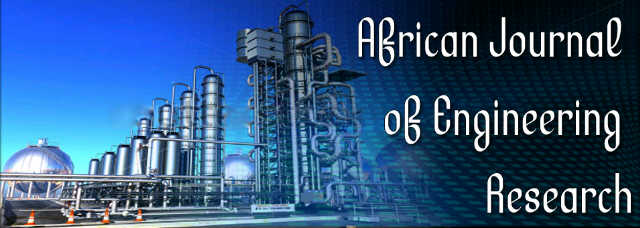Modelling and simulation of wireless sensor network for radio-frequency energy recharging circuits
Rajiv Dahiya, Ashok Arora and VR SinghAfrican Journal of Engineering Research
Published: May 13 2013
Volume 1, Issue 2
Pages 54-61
Abstract
A new design for an energy harvesting device is proposed in this paper, which enables scavenging energy from radio-frequency (RF) electromagnetic waves. Compared to common alternative energy sources like solar and wind, RF harvesting has the least energy density. The existing state-of-the-art solutions are effective only over narrow frequency ranges, are limited in efficiency response, and require higher levels of input power. This paper has a twofold contribution. First, we propose a dual-stage energy harvesting circuit composed of a seven-stage and ten-stage design, the former being more receptive in the low input power regions, while the latter is more suitable for higher power range. Each stage here is a modified voltage multiplier, arranged in series and our design provides guidelines on component choice and precise selection of the crossover operational point for these two stages between the high (20 dBm) and low power (-20 dBm) extremities. Second, we fabricate our design on a printed circuit board to demonstrate how such a circuit can run a commercial Mica2 sensor mote, with accompanying simulations on both ideal and non-ideal conditions for identifying the upper bound on achievable efficiency. With a simple yet optimal dual-stage design, experiments and characterization plots reveal approximately 100% improvement over other existing designs in the power range of 20 to 7 dBm.
Keywords: Optimization, power efficiency, radio-frequency (RF) energy harvesting circuit, Schottky diode, sensor, voltage multiplier.
Full Text PDF
